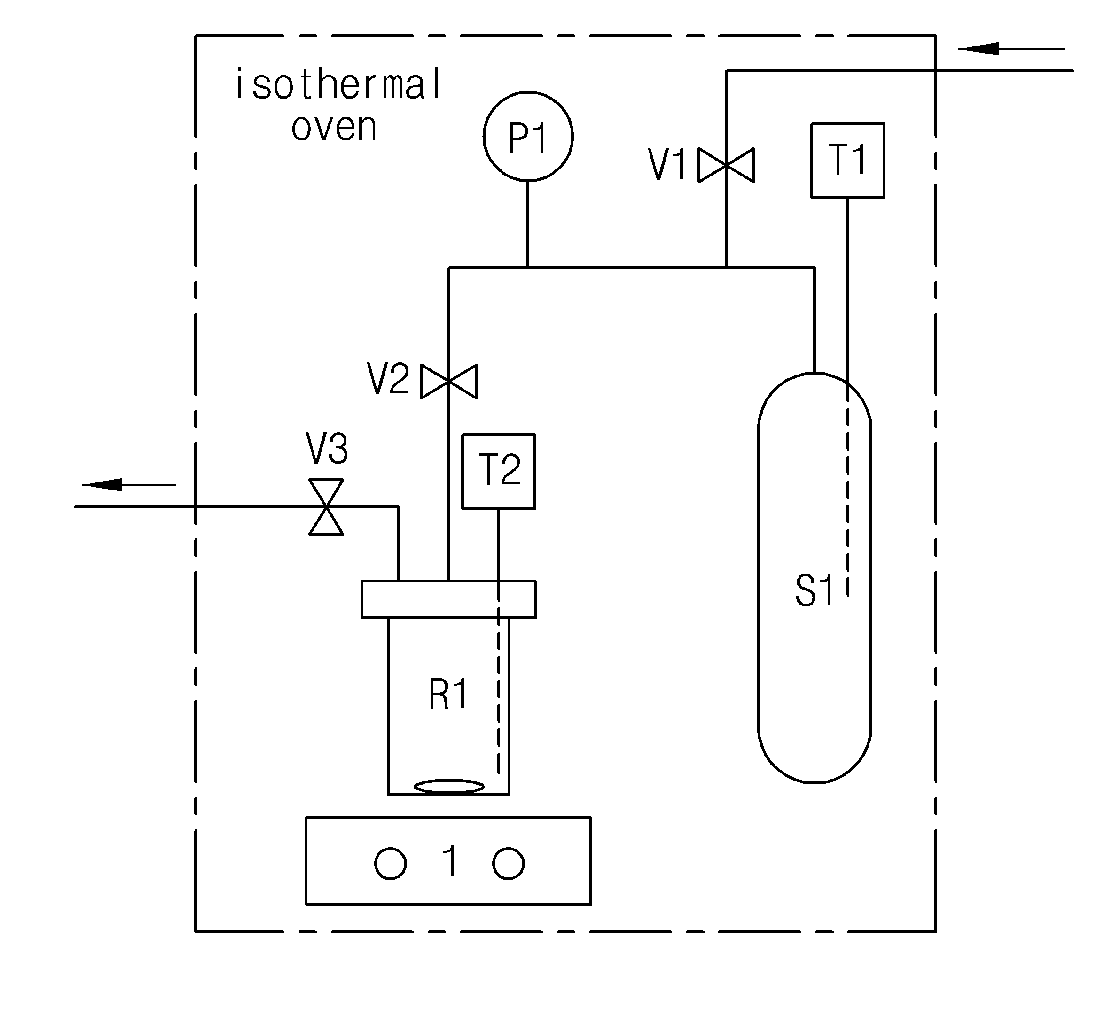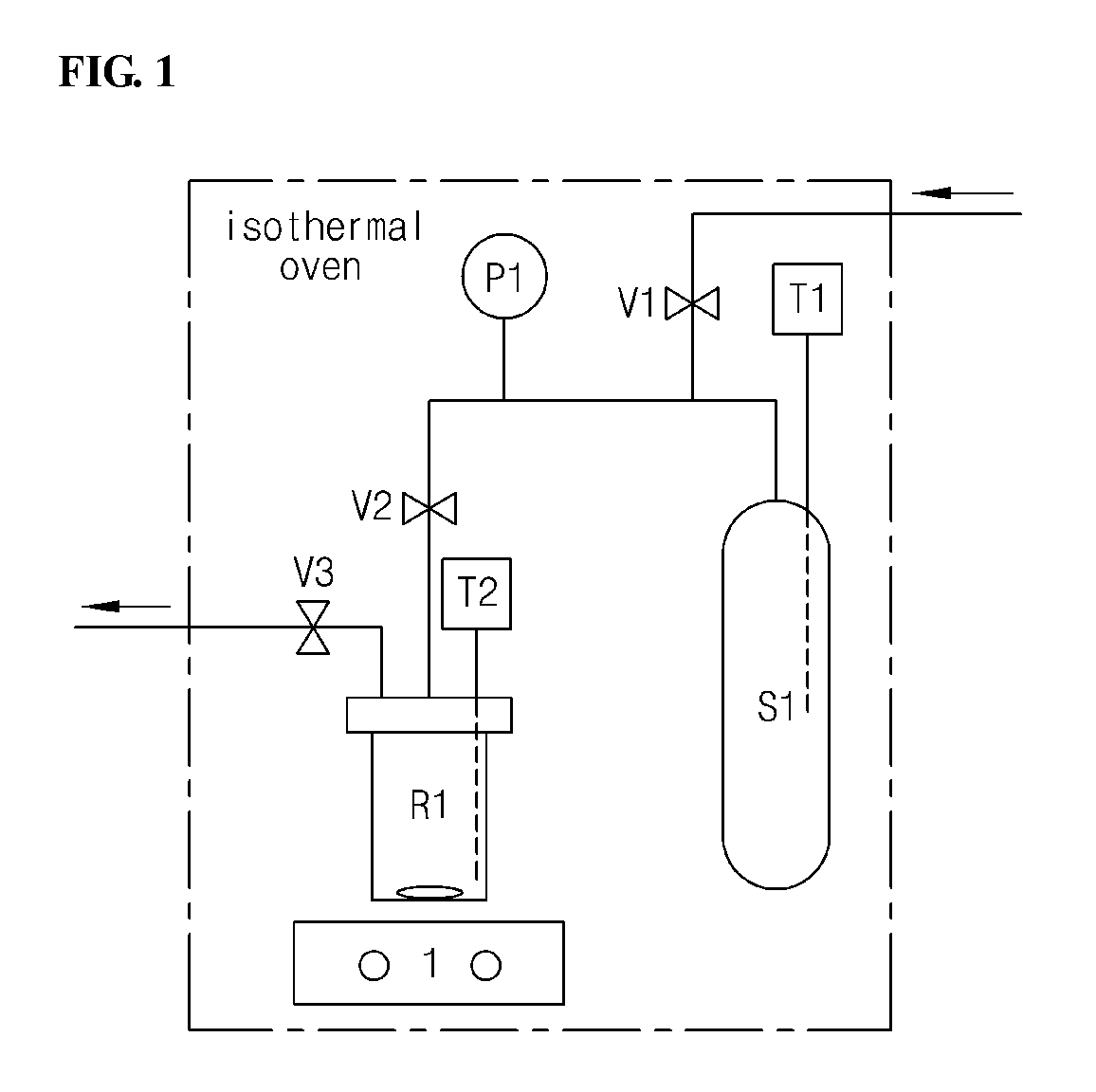Carbon dioxide absorbents
a technology of absorbent and carbon dioxide, which is applied in the direction of liquid degasification, other chemical processes, separation processes, etc., can solve the problems of deterioration of the co2 /sub>absorption capacity of the absorbent, large amount of energy provided, and 15% or more of the total cost of separating and recovering carbon dioxide, etc., to achieve excellent co2 absorbing capacity and high thermal stability
- Summary
- Abstract
- Description
- Claims
- Application Information
AI Technical Summary
Benefits of technology
Problems solved by technology
Method used
Image
Examples
example
Preparation Example 1
[0031]1-Methylimidazole (SAMCHUM Chemical) 8.2 g (0.1 mole) was added to a 250 mL 3-neck flask equipped with a reflux condenser and a thermometer, and 12.1 g (0.11 mole) of dimethylphosphite (Sigma Aldrich) was gradually added drop by drop thereto at 50° C. After the dropping of dimethylphosphite was completed, the mixture was heated to 90° C. and stirred for 12 hours. After cooling to room temperature, the resulting product was washed with diethyl ether (Sigma Aldrich) three times, and subjected to vacuum drying at 50° C. for 4 hours so as to remove volatile substances including unreacted materials, to thereby obtain dimethylimidazolium methylphosphite ([DMIM][MHPO3])(yield 96%).
preparation example 2
[0032]The reaction was carried out according to the same method as described in Preparation Example 1 except that instead of dimethylphosphite, 16.9 g (0.11 mole) of diethylsulfate (Sigma Aldrich) was added drop by drop at room temperature, stirred for 2 hours, washed and subjected to vacuum drying, to thereby obtain ethylmethylimidazolium ethylsulfate ([EMIM][EtSO4])(yield 96%).
example 1
[0033]To 40 g of ethylene glycol (EG, SAMCHUM Chemical) was added 24 g of monoethanolamine (MEA, SAMCHUM Chemical) and dissolved at 40° C. for 30 minutes or longer. Dimethylimidazolium methylphosphite ([DMIM][MHPO3]) 16 g prepared in Preparation Example 1 was dissolved in the mixture at 40° C. for 30 minutes or longer, thereby obtaining 20 wt % [DMIM][MHPO3]+30 wt % MEA+50 wt % EG as a carbon dioxide absorbent.
PUM
| Property | Measurement | Unit |
|---|---|---|
| wt % | aaaaa | aaaaa |
| wt % | aaaaa | aaaaa |
| pressure | aaaaa | aaaaa |
Abstract
Description
Claims
Application Information
 Login to View More
Login to View More - R&D
- Intellectual Property
- Life Sciences
- Materials
- Tech Scout
- Unparalleled Data Quality
- Higher Quality Content
- 60% Fewer Hallucinations
Browse by: Latest US Patents, China's latest patents, Technical Efficacy Thesaurus, Application Domain, Technology Topic, Popular Technical Reports.
© 2025 PatSnap. All rights reserved.Legal|Privacy policy|Modern Slavery Act Transparency Statement|Sitemap|About US| Contact US: help@patsnap.com



